Step-by-Step Guide: How to Drill through Plastic

Drilling through plastic may seem like a simple task, but it requires careful planning and execution to ensure the best results. Whether you are working on a DIY project or need to make holes in plastic for any other reason, this step-by-step guide will walk you through the process.
Step 1: Choose the right drill bit
One of the most important steps in drilling through plastic is selecting the right drill bit. For most plastics, a standard twist drill bit will suffice. However, for harder plastics like acrylic or polycarbonate, it is best to use a carbide or diamond-coated drill bit. These specialized bits are designed to cut through hard materials without causing damage or cracks.
Pro Tip: Before starting, it is a good idea to test the drill bit on a scrap piece of plastic to ensure it works effectively without causing any issues.
Step 2: Mark the drilling area
Once you have selected the drill bit, use a pencil or marker to mark the spot where you want to drill the hole. Make sure to measure and double-check the location to ensure accuracy. If you are drilling multiple holes, use a ruler or template to mark all the spots at once.
Step 3: Secure the plastic
Before drilling, it is important to secure the plastic piece to prevent it from moving or vibrating. Place the plastic on a sturdy surface or clamp it down to a workbench. This will provide stability and prevent any potential accidents.
Pro Tip: If you are working with thin or delicate plastic, place a piece of scrap wood underneath to prevent the plastic from cracking or bending.
Step 4: Start drilling
Once everything is properly set up, it’s time to start drilling. Position the drill bit perpendicular to the marked spot and apply gentle pressure. Start drilling at a slow speed to prevent the bit from grabbing the plastic or causing any damage. Increase the speed gradually as you feel more comfortable and confident.
Pro Tip: If the plastic starts to melt or chip, it means you are drilling too fast or with too much pressure. Slow down and adjust your technique accordingly.
Remember: safety first! Always wear safety goggles and gloves when drilling through plastic to protect yourself from any potential injuries. Additionally, make sure to work in a well-ventilated area to avoid inhaling any harmful fumes.
By following these simple steps, you can successfully drill through plastic with ease and precision. Just remember to take your time, use the right tools, and prioritize safety throughout the process. Happy drilling!
Preparation and Safety
Gather Your Materials
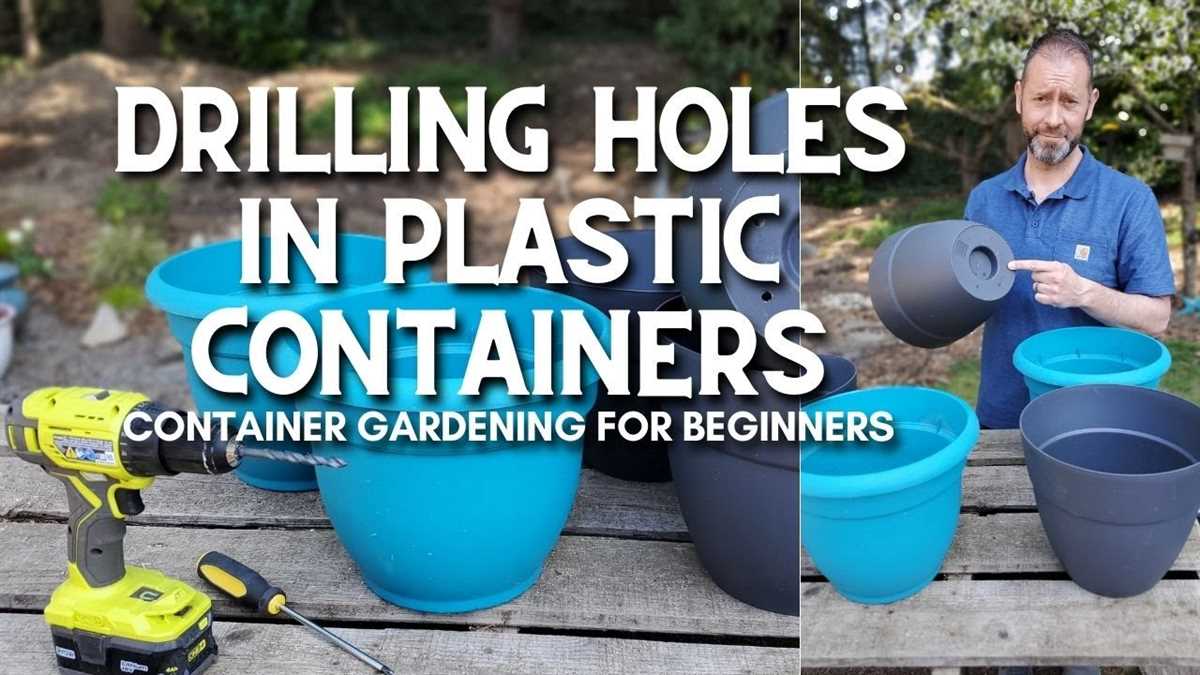
Before you begin drilling through plastic, it’s important to gather all the necessary materials. This will ensure that you have everything you need and can complete the task safely and efficiently. Here are the materials you’ll need:
- A drill
- A drill bit suitable for plastic (preferably a twist drill bit)
- A clamp or vice to hold the plastic securely
- A ruler or tape measure to measure the drilling points
- Safety glasses or goggles to protect your eyes
- A dust mask to protect your lungs from plastic dust
- A marker or pencil to mark the drilling points
Choose the Right Drill Bit
When drilling through plastic, it’s important to select the right type of drill bit. A twist drill bit is usually the best choice for plastic, as it has a sharp point and helical flutes that help to remove material as you drill. Avoid using spade or paddle bits, as they are designed for drilling wood and can cause the plastic to crack or splinter.
Secure the Plastic
Before you start drilling, it’s important to secure the plastic in place. This will prevent it from moving and ensure that the holes you drill are in the right place. You can use a clamp or vice to hold the plastic securely. Make sure the plastic is positioned so that it will not rotate or slip while you’re drilling.
Mark the Drilling Points
Once the plastic is secure, use a ruler or tape measure to measure and mark the drilling points. Make sure your measurements are accurate and that the marks are clearly visible. This will help you drill the holes in the right locations and prevent any mistakes.
Wear Safety Gear
Before you start drilling, put on your safety gear. Safety glasses or goggles will protect your eyes from any flying debris or plastic shards. A dust mask will prevent you from inhaling any plastic dust that may be generated while drilling.
Work in a Well-Ventilated Area
When drilling through plastic, it’s important to work in a well-ventilated area. This will help to disperse any plastic dust or fumes that may be produced during the drilling process. If you’re working indoors, open windows or use a fan to create a proper airflow.
Double-Check Everything
Before you start drilling, take a moment to double-check everything. Make sure you have the right drill bit, the plastic is securely clamped or vice, and your safety gear is on. It’s always better to be safe than sorry, so don’t rush into drilling until you’re absolutely sure everything is in order.
Gather the Right Tools
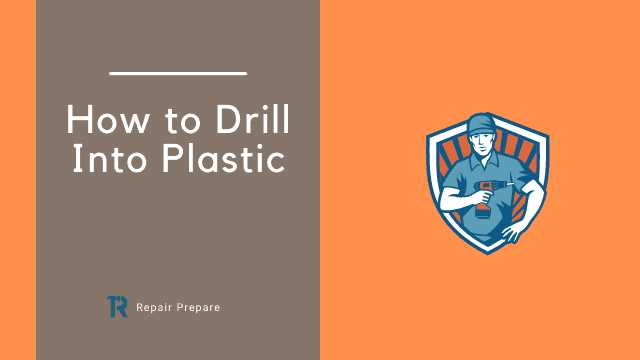
- Drill – Make sure you have a drill with a drill bit that is appropriate for the size of hole you want to make in the plastic. A standard twist drill bit made for wood or metal is usually suitable for drilling into plastic.
- Clamps – Use clamps to secure the plastic in place and prevent it from moving while you drill. This will help ensure that you create a clean, precise hole.
- Workbench – Find a sturdy workbench or table to provide a stable surface for drilling. This will make the process safer and more efficient.
- Protective gear – Always wear safety glasses to protect your eyes from any flying debris. If you are working with a particularly hard or brittle plastic, consider wearing gloves to protect your hands.
- Marker or pencil – Use a marker or pencil to mark the exact spot where you want to drill the hole. This will help guide your drill and ensure accuracy.
- Measuring tools – If you need to drill multiple holes or require precise measurements, use a ruler or tape measure to mark the spacing and depth of each hole.
Mark the Drilling Points
Before drilling holes in the plastic, it is important to mark the drilling points to ensure accuracy and precision. Here is a step-by-step guide on how to mark the drilling points:
- Measure and plan: Determine where you want to drill the holes on the plastic surface. Use a ruler or measuring tape to measure and mark the desired locations.
- Use a center punch: Place a center punch on each marked spot and gently tap it with a hammer. This will create a small indentation, which will help prevent the drill bit from slipping when you start drilling.
- Make guidelines: If you need to drill multiple holes in a straight line or pattern, you can use a straight edge or a template to draw guidelines on the plastic surface. This will help you align the drilling points accurately.
- Double-check: Before proceeding with drilling, double-check the marked drilling points to ensure they are in the desired locations and properly aligned.
By following these steps and taking the time to mark the drilling points accurately, you can ensure that the holes will be drilled in the right places without damaging the plastic material.
Select the Right Drill Bit
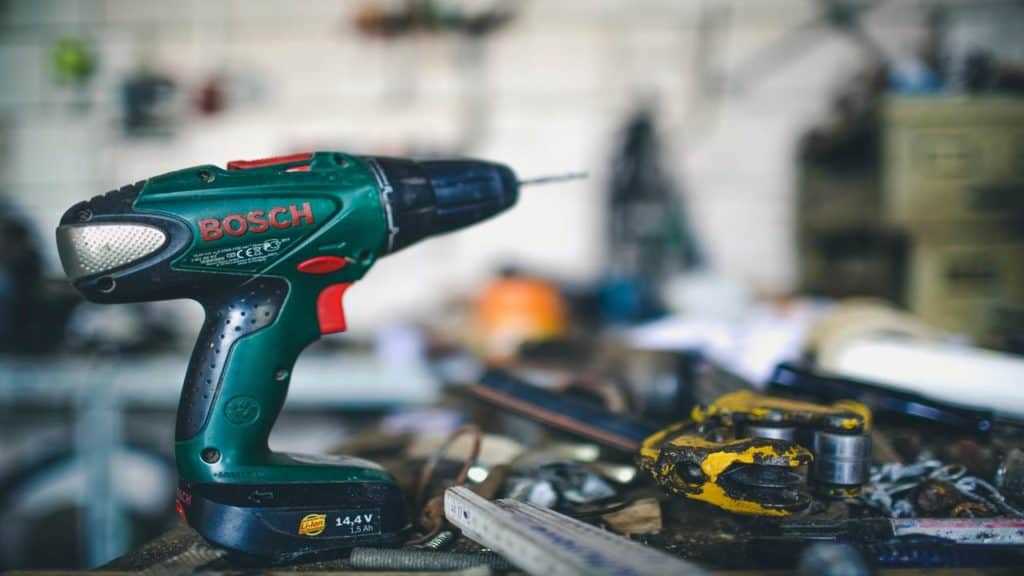
When drilling through plastic, it is important to select the right drill bit for the job. Using the wrong drill bit can result in cracking or melting the plastic, causing damage to your project.
Here are some factors to consider when choosing a drill bit for plastic:
- Material: Different types of plastic have different densities and properties. Make sure to select a drill bit that is specifically designed for drilling into plastic.
- Size: The size of the hole you need to drill will determine the size of the drill bit you should use. Consider the size of the screws or fasteners you will be using and choose a drill bit that matches the diameter.
- Coating: Some drill bits come with a coating that helps reduce friction and heat build-up. This can be beneficial when drilling through plastic as it helps prevent melting or warping. Look for drill bits with a plastic-specific coating if possible.
- Point Angle: The point angle of the drill bit refers to the angle at the tip. For drilling plastic, a drill bit with a sharp point angle is recommended, as it helps create a clean hole without causing excessive stress on the plastic.
- RPM: Rotations per minute (RPM) is an important consideration when drilling through plastic. Lower RPMs are usually preferred when working with soft plastics to prevent damage. Refer to the manufacturer’s guidelines for the recommended RPM for the drill bit you are using.
It is always a good idea to have a few different sizes and types of drill bits on hand when working with plastic. This allows you to choose the best option for the specific project and ensures you have the right tools for the job.
Secure the Plastic Material
The first step in drilling through plastic is to secure the plastic material. This is important to ensure that the plastic does not move or shift while you are drilling, as this can result in an uneven or misaligned hole.
Here are some tips to help you secure the plastic material:
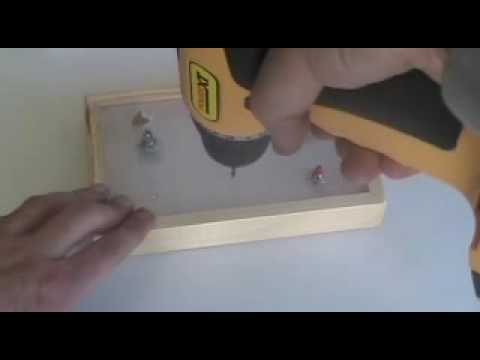
- Place the plastic material on a stable work surface. Use clamps or a vise to hold the material in place if necessary. This will prevent it from moving while you are drilling.
- If the plastic material is thin or flexible, you can place a piece of scrap wood underneath it for support. This will help prevent the material from bending or warping as you drill.
- Mark the location where you want to drill the hole using a pencil or a marker. This will help you drill accurately and avoid any mistakes or errors.
- Consider using a center punch or a nail to create a small indentation at the center of the marked hole. This will provide a starting point for the drill bit and help prevent it from slipping or wandering on the surface of the plastic.
Remember to always wear safety goggles and gloves when working with plastic or any other materials. This will protect your eyes and hands from any potential hazards or accidents.
By following these steps, you can securely hold the plastic material in place and ensure a successful drilling process.
Start Drilling
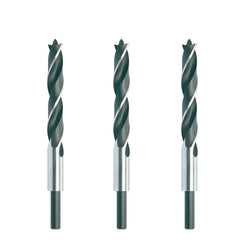
Once you have prepared the plastic and marked the drilling point, you are ready to start drilling. Follow these steps:
- Secure the plastic sheet firmly.
- Put on safety goggles to protect your eyes.
- Insert the drill bit into the chuck of the drill.
- Make sure the drill is set to the correct speed and torque for plastic. Refer to the manufacturer’s instructions for guidance.
- Position the drill bit exactly on the marked drilling point.
- Apply gentle pressure and start drilling at a slow speed.
- Keep the drill bit perpendicular to the plastic surface to prevent it from slipping.
- As you drill, maintain a steady, even pressure to avoid causing damage to the plastic.
- Periodically stop drilling to clear away any plastic debris that may have accumulated around the hole. This will help prevent overheating and ensure a smooth drilling process.
- Continue drilling until the desired depth is reached.
- Once you have finished drilling, release the pressure on the drill, turn off the power, and remove the drill bit from the hole.
- Clean up any remaining debris and inspect the drilled hole to ensure it meets your requirements.
Remember to always exercise caution and follow safety guidelines when using power tools. If you are unsure about drilling through plastic, it is recommended to seek professional assistance.
Control the Speed and Pressure
When drilling through plastic, it is important to control the speed and pressure to prevent cracking or melting of the material. Here are some tips to help you achieve the best drilling results:
- Start with a low speed: Begin drilling at a slow speed to minimize the risk of overheating or melting the plastic. Starting with a high speed can cause the plastic to warp or crack.
- Apply steady pressure: Use a light and steady pressure when drilling through plastic. Applying too much force can cause the plastic to crack, while too little pressure might result in the drill bit slipping.
- Use a sharp drill bit: Make sure to use a sharp drill bit specifically designed for drilling through plastic. Dull drill bits can create excessive heat and cause the plastic to melt.
- Cool the plastic: If you notice the plastic getting too hot during drilling, you can periodically pause and spray some water or use a coolant to cool down the area. This helps to prevent melting or warping of the plastic.
- Work in short bursts: Instead of drilling continuously, try working in short bursts to give the plastic time to cool down. This can help to prevent overheating and deformation of the material.
- Choose the right drill bit size: Selecting the correct drill bit size is crucial for successful drilling through plastic. Using a bit that is too small can cause the plastic to crack, while a bit that is too large may create excessive heat and melting.
- Secure the plastic: To avoid the plastic from moving or vibrating during drilling, it is important to secure it firmly in place. Use clamps or other methods to hold the plastic steady and prevent any accidental slipping.
Finishing Touches and Cleanup
After drilling through the plastic, there are a few finishing touches and cleanup steps you can take to ensure everything is tidy and secure.
1. Remove any plastic debris:
Use a vacuum cleaner or a small brush to remove any plastic shavings or debris left behind from drilling. This will prevent them from causing a mess or interfering with the functionality of your project.
2. Smooth the edges:
Depending on the purpose of your project, you may want to smooth the edges of the drilled hole. This can be done using a fine-grit sandpaper or a deburring tool. Be sure to work gently and keep the plastic securely in place to avoid any accidental damage.
3. Test the fit:
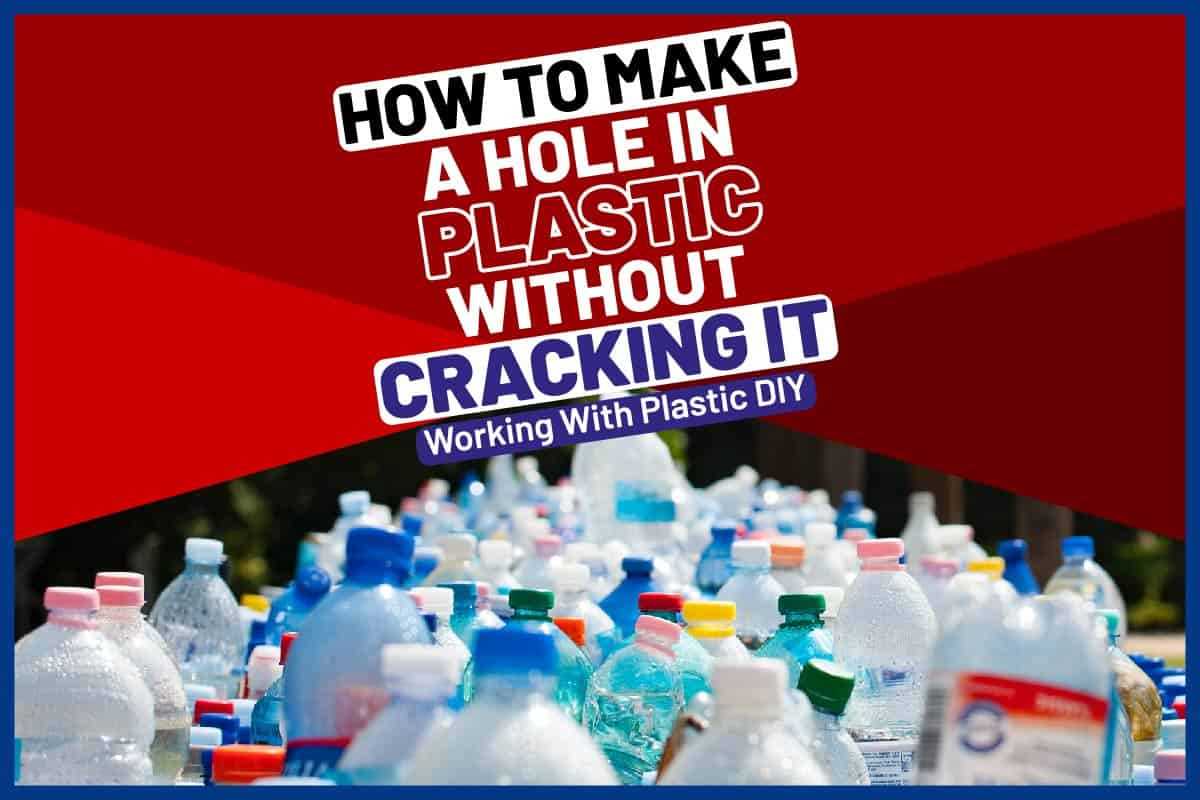
Before proceeding with any further steps, test the fit of the drilled hole with the desired object or component. Ensure that it aligns properly and there are no rough edges or obstructions that may cause problems. This step is particularly important if you are drilling multiple holes for assembly or if the hole needs to be precise.
4. Clean the surface:
If there is any dirt, dust, or residue on the surface of the plastic, use a mild cleaner or rubbing alcohol and a clean cloth to wipe it off. This will help improve adhesion if you are planning to glue or attach anything to the plastic.
5. Consider additional reinforcement:
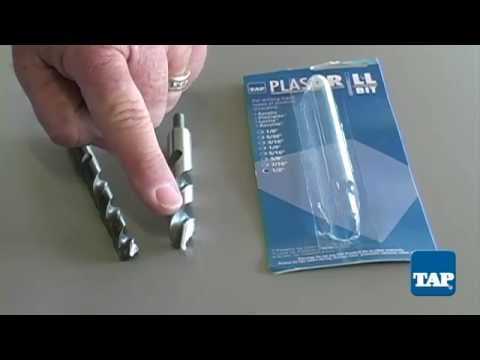
Depending on the application and the material of the plastic, you may want to consider reinforcing the drilled hole with additional support. This can be done using washers, grommets, or other reinforcement options suitable for your specific project.
6. Dispose of waste properly:
Dispose of any plastic waste, such as shavings, in accordance with your local recycling guidelines. Plastic is a non-biodegradable material and should not be disposed of in regular waste bins.
By following these finishing touches and cleanup steps, you can ensure that your drilled hole in the plastic is clean, secure, and ready for use in your project.
FAQ:
What tools do I need to drill through plastic?
To drill through plastic, you will need a few tools: a power drill, a drill bit specifically designed for plastic, a clamp or vise to hold the plastic in place, safety goggles, and a dust mask.
Is it necessary to wear safety goggles and a dust mask when drilling through plastic?
Yes, it is highly recommended to wear safety goggles and a dust mask when drilling through plastic. This will protect your eyes from any flying debris and prevent you from inhaling any dust or particles.
Can I use a regular drill bit to drill through plastic?
It is possible to use a regular drill bit to drill through plastic, but it is not recommended. A drill bit specifically designed for plastic will produce cleaner and more precise holes without causing any damage or cracking to the plastic.
How can I prevent the plastic from cracking while drilling?
To prevent the plastic from cracking while drilling, you can place a piece of scrap wood underneath the plastic as a support. This will help distribute the pressure and prevent the plastic from flexing or breaking.
Video:













